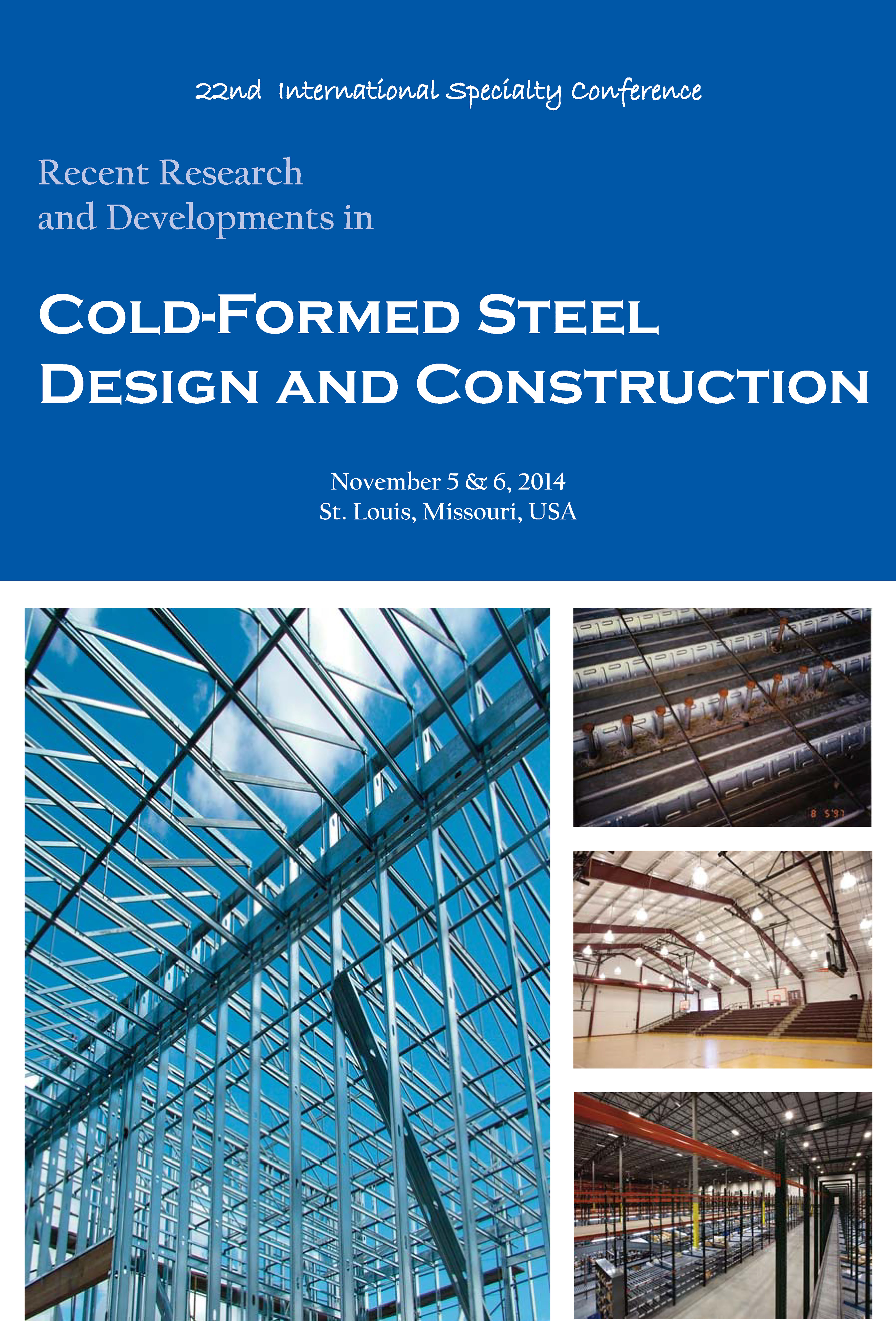Session Dates
06 Nov 2014
Abstract
This paper describes six full-scale laboratory tests conducted on cold-formed steel portal frames buildings in order to investigate the effects of joint flexibility and stressed-skin diaphragm action. The frames used for the laboratory tests were of span of 6 m, height of 3 m and pitch of 10⁰; the frame spacing was 3 m. The laboratory test setup represented buildings of length of 9 m, having two gable frames and two internal frames. Tests were conducted on frames having two joint sizes, both with and without roof cladding. It was shown that as a result of stressed-skin diaphragm action, under horizontal load the bending moment at the eaves was reduced by approximately a factor of three, relative to the bare frame. It was also shown that as a result of stressed-skin action, the deflection of the internal frame reduced by 90%, and that the stiffness was independent of joint flexibility. On the other hand, owing to redistribution of bending moment from the eaves to the apex, the effect of joint flexibility was shown not to be significant on the overall failure load of the frame.
Department(s)
Civil, Architectural and Environmental Engineering
Research Center/Lab(s)
Wei-Wen Yu Center for Cold-Formed Steel Structures
Sponsor(s)
Capital Steel Buildings Ltd.
Meeting Name
22nd International Specialty Conference on Cold-Formed Steel Structures
Publisher
Missouri University of Science and Technology
Document Version
Final Version
Rights
© 2014 Missouri University of Science and Technology, All rights reserved.
Document Type
Article - Conference proceedings
File Type
text
Language
English
Recommended Citation
Wrzesien, A. M.; Lim, James B. P.; and Lawson, R. M., "Effect of Stressed-Skin Action on the Behaviour of Cold-Formed Steel Portal Frames" (2014). CCFSS Proceedings of International Specialty Conference on Cold-Formed Steel Structures (1971 - 2018). 3.
https://scholarsmine.mst.edu/isccss/22iccfss/session09/3
Effect of Stressed-Skin Action on the Behaviour of Cold-Formed Steel Portal Frames
This paper describes six full-scale laboratory tests conducted on cold-formed steel portal frames buildings in order to investigate the effects of joint flexibility and stressed-skin diaphragm action. The frames used for the laboratory tests were of span of 6 m, height of 3 m and pitch of 10⁰; the frame spacing was 3 m. The laboratory test setup represented buildings of length of 9 m, having two gable frames and two internal frames. Tests were conducted on frames having two joint sizes, both with and without roof cladding. It was shown that as a result of stressed-skin diaphragm action, under horizontal load the bending moment at the eaves was reduced by approximately a factor of three, relative to the bare frame. It was also shown that as a result of stressed-skin action, the deflection of the internal frame reduced by 90%, and that the stiffness was independent of joint flexibility. On the other hand, owing to redistribution of bending moment from the eaves to the apex, the effect of joint flexibility was shown not to be significant on the overall failure load of the frame.



